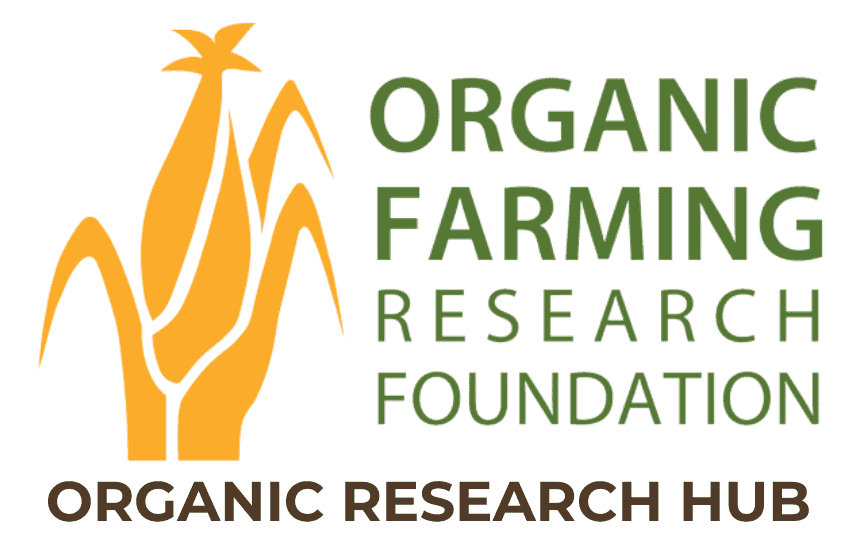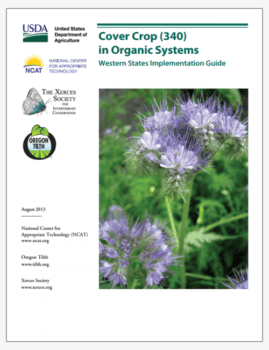Early Impacts of Cover Crop Selection on Soil Biological Parameters During a Transition to Organic Agriculture
Project Director: Leah Ellman-Stortz, Texas A&M University
Project Overview
Organic peanut production is not widely practiced in Texas, yet the state is responsible for supplying the majority of organic peanuts in the US. While it can be a profitable endeavor due to consumer demand, obtaining the required USDA organic certification necessitates farmers to implement a 3-year transition period, often resulting in yield reductions.
One of the goals of organic farming is to enhance soil organic carbon and nutrient cycling, a practice encouraged by the USDA through the use of cover crops. Research has shown that different cover crops can have varying impacts on soil health, potentially influencing the timeline for observing these changes.
This study examined soil health in plots under conventional and recently transitioned organic management using four cover crop treatments (rye, radish, rye/vetch mix, and rye/vetch/radish mix) and a conventional fallow. The study hypothesized that under conventional management, cover crops would increase microbial activity compared to winter fallow. Additionally, cover crop mixes were expected to have greater microbial activity than single-species treatments, and organic management was expected to result in increased activity and decreased yields compared to conventional management.

Farmer Takeaways
- Soil health variables responded positively to the presence of cover crops in rotation during the transition to cover crop use, and the cover crop type had little impact on responses to soil health variables.
- Selecting a single species of cover crop should be sufficient for gaining any cover crop benefits when beginning this management transition.
- Transition to organic management resulted in some increased soil health variables, indicating a community shift in microbial activity.
Project Objectives and Approach
The objectives of this project were to 1) measure changes in soil health using biological markers after one cycle of a cotton-peanut rotation under organic management in West Texas, and 2) assess the influence of cover crop use, selection, and organic management on these markers over a full growing season.
Studies were conducted at Texas A&M AgriLife Research Centers located in Lubbock (Southern High Plains ecoregion) and Vernon (Southern Rolling Plains ecoregion), TX, in summer 2020. At each location, the study used two randomized complete blocks for organic and conventional management, with four cover crop treatments in each block. Fallow control plots were included under conventional management only. Cover crop treatments included rye, radish, rye/vetch mix, and rye/vetch/radish mixes.
Data was gathered and analyzed on cover crop biomass and soil biological parameters including in situ respiration, mineralizable carbon, enzyme activity, PLFA’s, and nodulation.
Key Findings
- Peanut yield was greater under conventional management at Lubbock (1485 kg ha−1) compared to organic management (1179 kg ha−1) but did not differ by management at Vernon.
- Both locations saw differences in cover crop herbage mass based on management, but not cover crop selection. More herbage mass was produced under conventional management (3231 kg ha−1) compared to organic (1677 kg ha−1) at Vernon, and the opposite was true at Lubbock (1201 kg ha−1 organic and 953 kg ha−1 conventional).
- There were no differences in cover crop herbage mass according to the selection of successful cover crops at either location.
- Yield was not negatively impacted in peanut crops when a cover crop was in rotation, and early elevated soil microbial responses to adding a cover crop was observed.
- When considering multi-species cover crop treatments compared to single-species cover crop treatments, there was no clear-cut difference across any of the response variables.
- Composted manure increased soil microbial activity. Organic management also improved nodule effectiveness, enzyme activity, and carbon mineralization. Even without manure, organic plots had higher PLFA counts, indicating a microbial community shift regardless of location.
Resources
Ellman-Stortz, L., Lewis, K., Gentry, T., DeLaune, P., Pierson, E., & Boogades, N. (2024). Early impacts of cover crop selection on soil biological parameters during a transition to organic agriculture. Agrosystems, Geosciences & Environment, 7
Read MoreLocation
TexasCollaborators
Katie Lewis, Terry Gentry, Paul DeLaune, Elizabeth Pierson, Nicholas Boogades, Texas A&M University
Region
West/Southwest
Topic
Soil Health, Transitioning to Organic, Cropping Systems
Category
Grain and Field Crops
Year Published
2024


